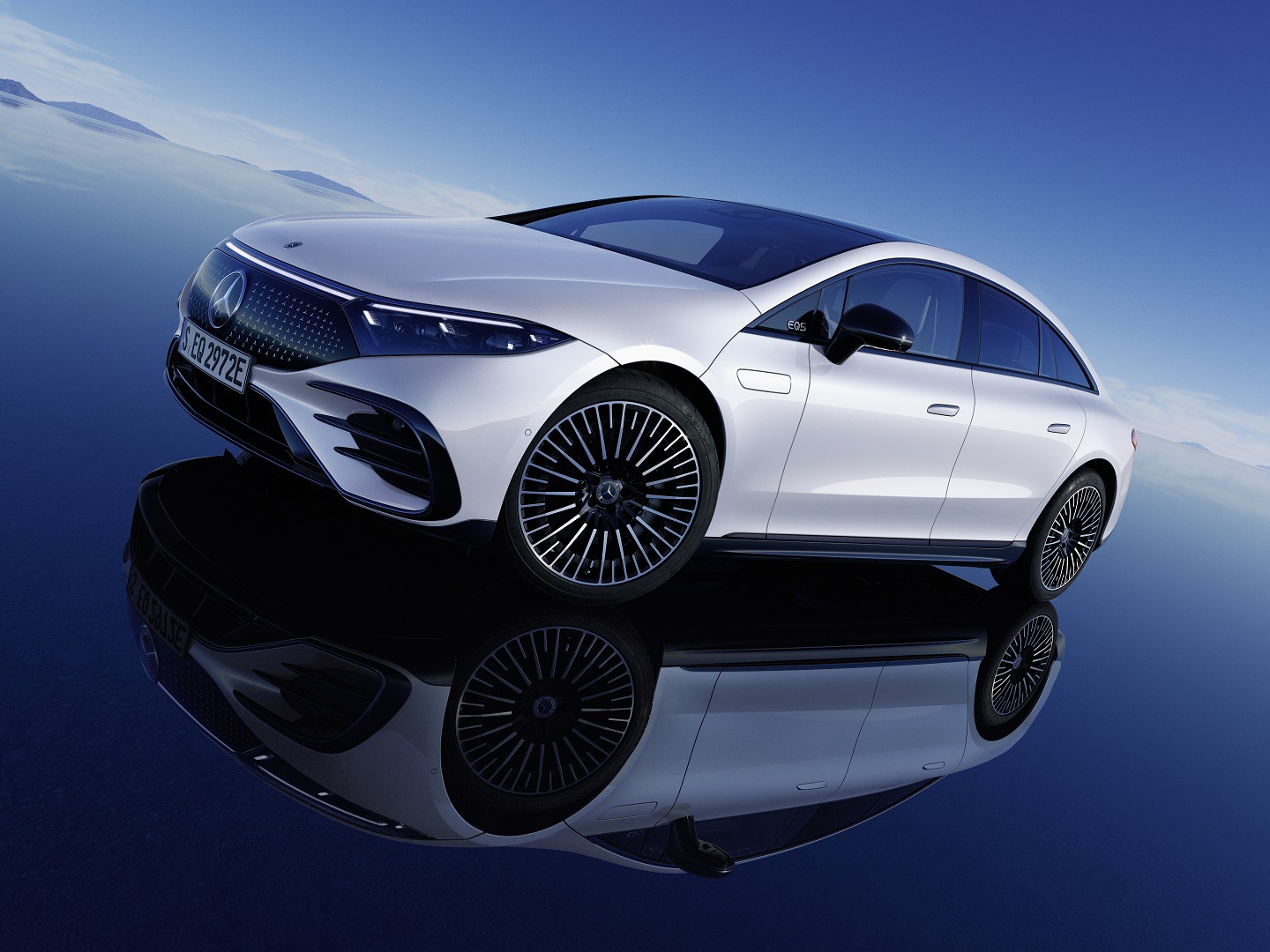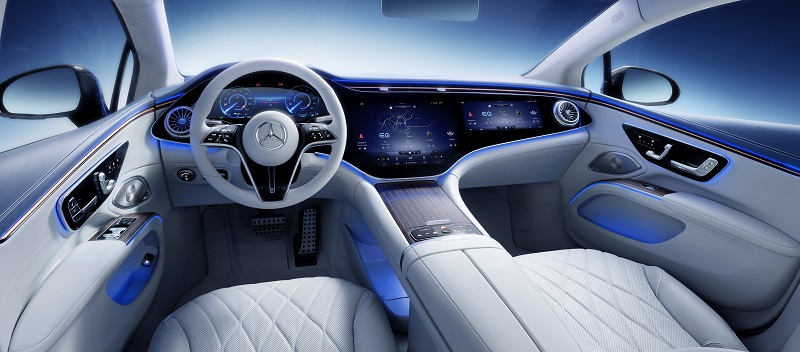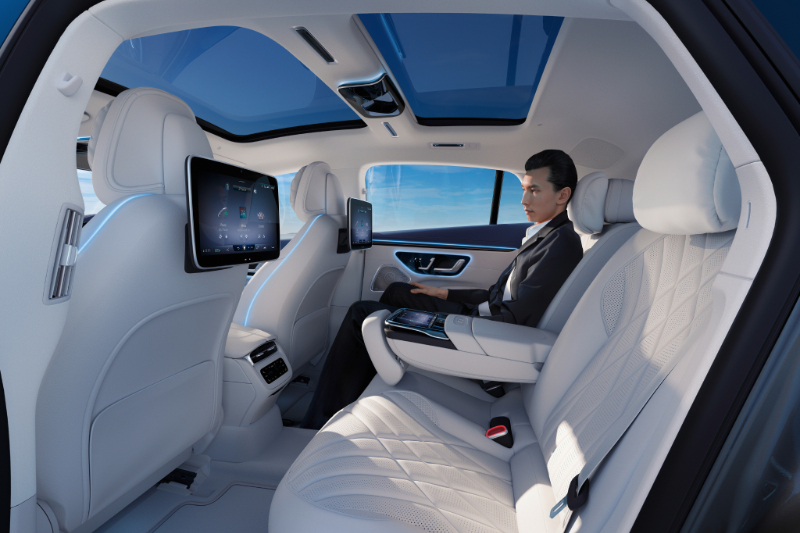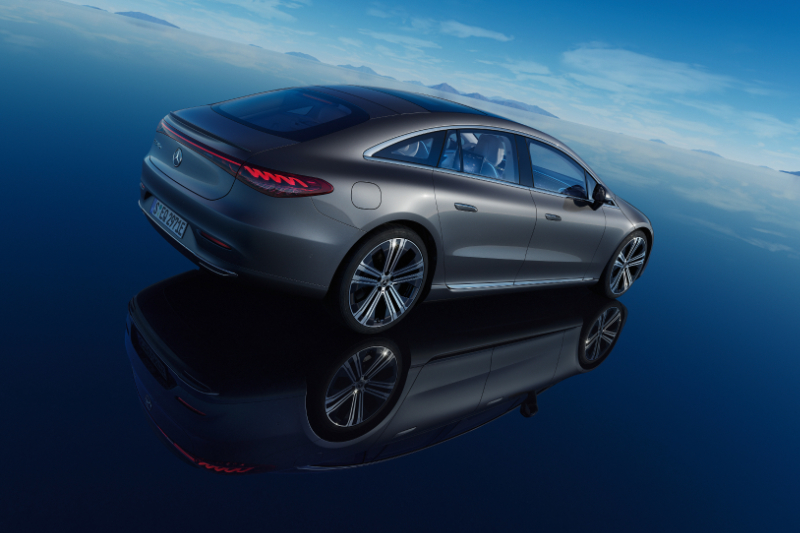
In 2021, Mercedes-Benz launched its all-electric vehicle segment with the EQS (All photos: Mercedes-Benz)
Modern society has touted electric vehicles as the future of automobiles, an alternative that cuts tailpipe emissions and oil consumption to reduce carbon footprint. While calling them climate saviours may be a bit of a stretch, the EV idea has caused an exigent swell within the industry that cannot be ignored.
In 2021, Mercedes-Benz launched its all-electric vehicle segment with the EQS, a luxury saloon that set the tone for the carmaker’s Ambition 2039 initiative. The company aims to offer a new carbon-neutral fleet within 20 years, and as early as 2030, it wants more than half the cars it sells to feature electric drive systems, be they full EVs or plug-in hybrids.
With the EQS, it appeared as though designers were given carte blanche to dream up a new all-electric architecture — a concept that will wow the crowds. “Purpose design”, as Mercedes calls it, allowed the rearrangement of components that advanced ergonomics. The EQS 450+, which we had the pleasure of testing, was sinuous in every sense. Seamless uninterrupted lines hold the gaze, leading it from head to tail. A long and taut greenhouse creates a bow-like silhouette, enhanced by frameless doors, concealed handles (that automatically protrude as you approach the car) and a high and curved beltline. It is the most aerodynamic production vehicle ever, claims the German marque, with a drag coefficient of 0.20 thanks to the collaborative effort between aerodynamicists and designers.
As one orbits the vehicle, the distinctive 21in light-alloy multi-spoke wheels and illuminated 3D helix tail lights catch the eye, but one glimpse inside the cabin elicits an involuntary response to gape. Front seat occupants are presented with an instrument panel that sweeps from A-pillar to A-pillar. Aptly named the MBUX Hyperscreen, three displays merge seamlessly under a bonded curved cover glass. There is a configurable instrument cluster for the driver, a sizeable screen in the middle that acts as the control hub, and one for the passenger to adjust car settings, watch films, turn on the massaging seats or play a round of Sudoku.
93595478-81af-46eb-a17b-98fd4adfb7e1.jpg

It was clear that Mercedes sought to digitise as many elements as possible. And while it was fun exploring and getting to know what its brain could do, the novelty wore off rather quickly. Since almost everything was touchscreen, it could get frustrating flipping through submenu after submenu (and wrongly selecting another function too many times in between) while trying to keep your eyes on the road. The result is a barrage of fingerprints all over the panel. And if the perceptibility of every single mote of dust on the glass does not irk you, the reflections cast on it most likely will. One can always summon the help of the voice assistant for simple tasks, but good luck trying to call someone with a Malaysian name.
That said, the EQS 450+ was an absolute pleasure to drive, with high scores for speed and silence. With up to 333hp, the car can perform the century sprint in 5.5 seconds and easily (or dangerously) climb triple digits without sweat. The massive battery in the floor already provides a low centre of gravity, but the body level lowers even further when you hit 120kph to reduce aerodynamic drag and increase handling stability. Let us just say we had a little fun testing its mettle on the Maju Expressway to Putrajaya and the newly developed SUKE highway.
The body level returns to the initial position when the speed goes below 80kph and to be honest, this is where the driving experience feels most luxurious. At lower speeds, the EQS 450+ is a capsule of silence. It needs a little getting used to, since that familiar sensorial experience is no longer there. But if the quietness borders on eerie, you can either look through the soundscapes to play something that mimics a combustion engine or make full use of the Burmester surround sound system and blast your favourite tunes instead. We chose the latter.
1086696e-8f5c-4da0-ab37-56075f3e5010.jpg

The vehicle glided over notorious potholes and absorbed bumps with ease. Despite measuring 5.2m long and weighing 2.5 tonnes, it was surprisingly agile and remained flat when pressed into the winding corners up Genting Highlands. Steering effort was minimal, which helped mask the heft of the behemoth.
All EQ models have an electric powertrain at the rear axle, which comes in handy when negotiating tight parking spaces. While we had no problem backing up our EQS 450+ into a charging station at attractions with high footfall, such as Genting’s Premium Outlets or KLCC, it left us wondering if there is sufficient infrastructure for such conveniences further outside the Klang Valley. And unless you are spending more than five hours at one place, the AC chargers in parking lots do not significantly recharge the car’s high-voltage battery. But if by chance you do manage to find a DC fast-charging station, 31 minutes is all you need to go from 10% to 80%.
With that said, it might not pose as a constant worry to most — the EQS’ all-electric range is 782km after all. And if you find yourself in another one of KL’s infamous traffic jams, the intelligent recuperation and one-pedal driving will recover the battery’s energy. In fact, the EQS is the kind of car you want to be in if you are in a standstill. The plush seats, insulated glass, entertainment screens and fantastic sound system make the cabin a cinematic one, glowing in your desired ambient lighting as the car serenely wafts to your destination.
The EQS 450+ is an intelligent vehicle. Up to 350 sensors are used in all parts of the car, measuring distances, speeds and accelerations, lighting conditions, precipitation and temperatures, seat occupancy as well as the driver’s movements and the passengers’ language. The information is processed by control units that make decisions at lightning speed. Thanks to artificial intelligence, the car is highly capable of learning the driver’s habits and thus remembers preferences and can offer suggestions to improve driving experience.
4597c2c3-2232-4d46-886c-6ee323be38bb.jpg

It naturally makes one wonder what is under the hood, but you cannot pop it open even if you wanted to. Mercedes has intentionally made it almost impossible to do so (talk about hands off the merchandise, eh?). But you might actually want to fight off your curiosity with this one, lest you unintentionally mishandle the massive HEPA (high-efficiency particulate air) filter — among other ancillaries — occupying the space. It is the largest to be installed in a vehicle, with approximately the surface area of a double page spread of our newspaper.
We have to say, the filtration tech is quite impressive. It is possibly the most elaborate to date for a production vehicle and a much-appreciated addition during these post-pandemic times. Sulphur dioxide and nitrogen oxide as well as odours are reduced thanks to an activated charcoal coating while more than 99.65% of airborne particles and dust are removed with its microfibre layer. Such conditions are almost comparable to operating theatres, the German marque notes. It is a big win for germaphobes.
So, no frunk. But not to worry. The rear hatch is an abyss. The massive trunk can manage 610 litres of cargo, and the seats, when folded, allow twice as much.
The EQS 450+ is undisputedly a dashing car, with all the bells and whistles that were made to impress. There is a lot of tech crammed in, which is why we think the MBUX could be more straightforward and simplified. But perhaps this is Mercedes’ way of flexing its muscles while welcoming a new era. The carmaker has added a few more EVs to its fleet since the release of the EQS, but we will explore those another day.
This article first appeared on Feb 13, 2023 in The Edge Malaysia.


